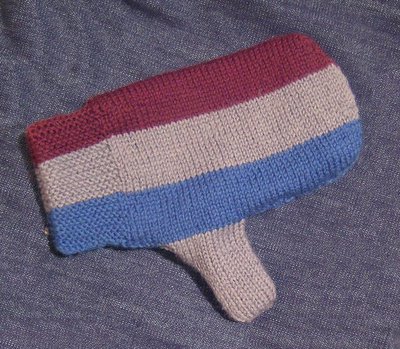
In one of my many knitting books, The Bantam Step-by-Step Book of Needle Craft, I found a nicely illustrated history of knitting. Evidence of knitting can be traced as far back as 900 BC, and it had become well-known by the 16th century with the advent of knitting guilds in many of the main cities of Europe. These guilds were made up primarily by men, and women were the spinners.
Each apprentice had to meet high standards and pass a final exam which included "a shirt, a felted cap, a pair of socks and a colorwork carpet". Amazingly, the first knitting machine was invented in 1589, designed to knit stockings. After that, hand knitting fell into a bit of a decline.
Early evidence of knitting is found in paintings such as the one above, a 14th century painting which depicts the Virgin Mary knitting a shirt on four needles. The picture on the right shows a 16th century drawing (by Annibale Caracci (1560-1609)) of an itinerant stocking knitter. In other words, this man's job was to travel from place to place, knitting as he went! Notice the contraption rigged up at his side in order for him to knit with two colours with ease.
Is it just me or does he look a little self-conscious? He seems to be looking over his shoulder uneasily. Maybe being an itinerant stocking knitter had its dangers, and required bravery, or maybe he's just worried someone will tip him over from his precarious position on the stairs. In any case, I believe that men who knit today should feel confident that they are carrying on a noble tradition. (As always, you can click on the images to see them larger)
Read more...






































